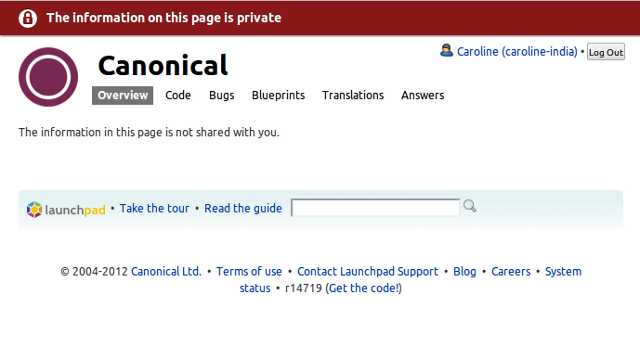Reimagining the nature of privacy in Launchpad (part 2)
Wednesday, February 15th, 2012We are reimagining the nature of privacy in Launchpad. The goal of the disclosure feature is to introduce true private projects, and we are reconciling the contradictory implementations of privacy in bugs and branches.
We are adding a new kind of privacy called “Proprietary” which will work differently than the current forms of privacy.
The information in proprietary data is not shared between projects. The conversations, client, customer, partner, company, and organisation data are held in confidence. proprietary information is unlikely to every be made public.
Many projects currently have private bugs and branches because they contain proprietary information. We expect to change these bugs from generic private to proprietary. We know that private bugs and branches that belong to projects that have only a proprietary license are intended to be proprietary. We will not change bugs that are public, described as security, or are shared with another project.
This point is a subtle change from what I have spoken and written previously. We are not changing the current forms of privacy. We do not assume that all private things are proprietary. We are adding a new kind of privacy that cannot be shared with other projects to ensure the information is not disclosed.
Launchpad currently permits projects to have default private bugs and branches. These features exist for proprietary projects. We will change the APIs to clarify this. eg:
project.private_bugs = True => project.default_proprietary_bugs = True
project.setBranchVisibilityTeamPolicy(FORBIDDEN) => project.default_proprietary_branches = True
Projects with commercial subscriptions will get the “proprietary” classification. Project contributors will be able to classify their bugs and branches as proprietary. The maintainers will be able to enable default proprietary bugs and branches.
Next part: Launchpad will use policies instead of roles to govern who has access to a kind of privacy.









